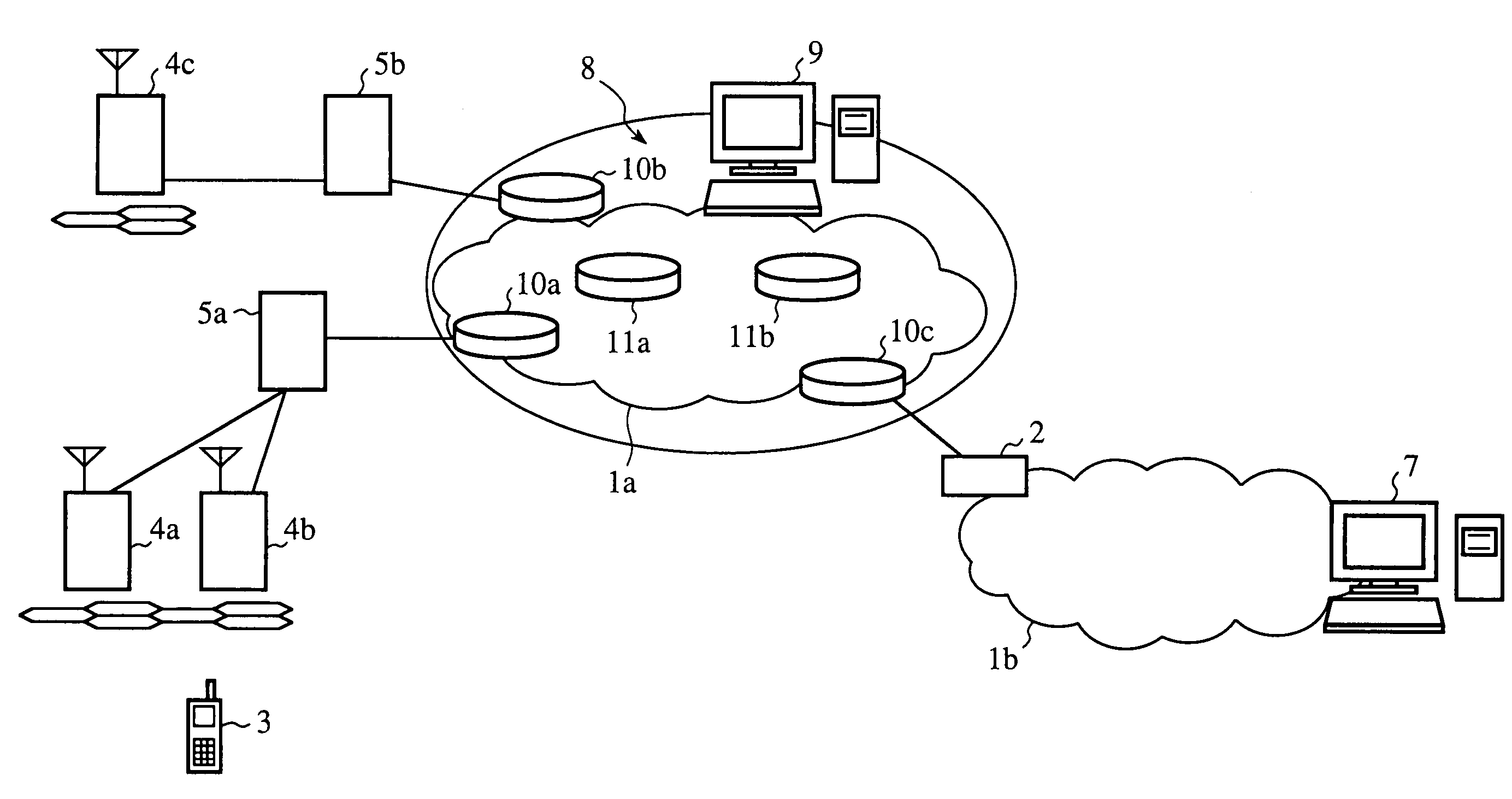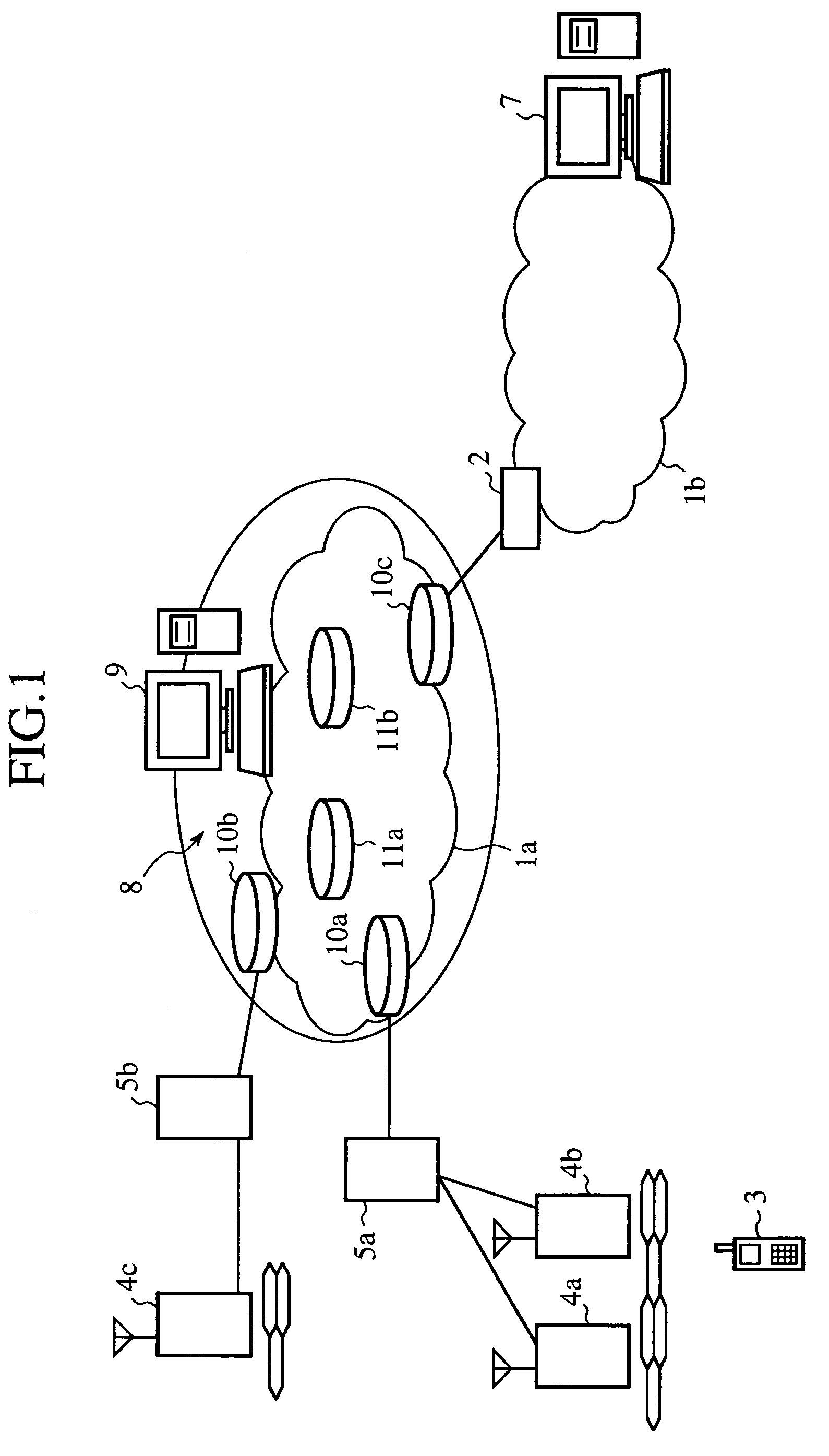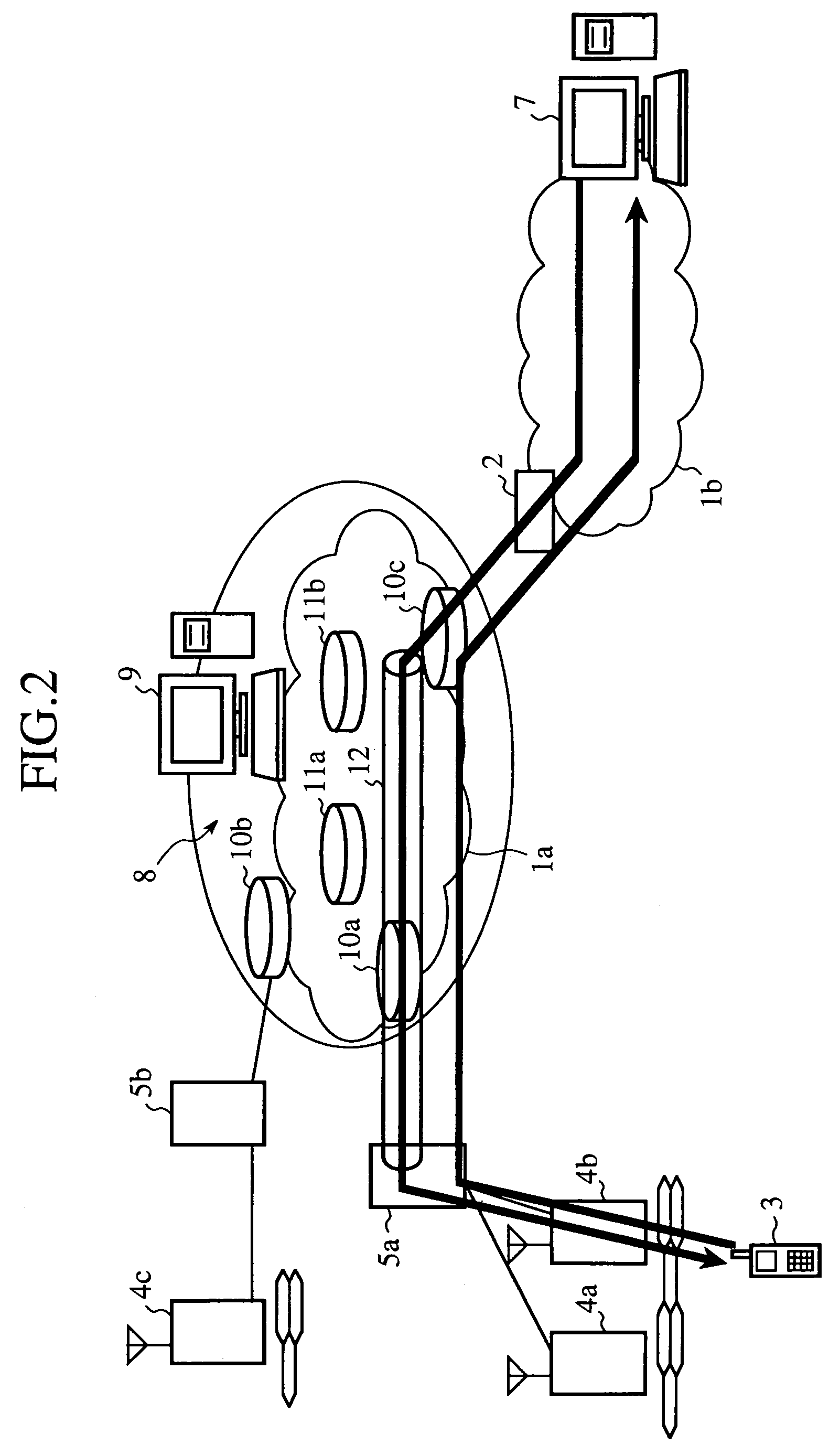Mobile network that routes a packet without transferring the packet to a home agent server
- Summary
- Abstract
- Description
- Claims
- Application Information
AI Technical Summary
Benefits of technology
Problems solved by technology
Method used
Image
Examples
embodiment 1
[0046]FIG. 1 shows multiple IP networks including a mobile network in accordance with embodiment 1 of the present invention. In the figure, reference numerals 1a and 1b denote IP networks, reference numeral 2 denotes a network gateway, reference numeral 3 denotes a mobile terminal, reference numerals 4a, 4b, and 4c denote base stations, reference numerals 5a and 5b denote foreign agents (FAs), reference numeral 7 denotes a communication node (CN), reference numeral 8 denotes a virtual home agent (HA), reference numeral 9 denotes a home agent (HA) server, reference numerals 10a to 10c denote IP tunnel routers, and reference numerals 11a and 11b denote routers.
[0047]The IP networks 1a and 1b are different IP networks each of which partially constitutes multiple IP networks, and operate according to different protocols. Each of the IP networks 1a and 1b has a plurality of routers. It is assumed that the IP network 1b shown in the figure is the Internet. The IP networks 1a and 1b are co...
embodiment 2
[0079]FIG. 6 shows a flow of user data between a mobile terminal 3 and a CN 7 in a mobile network in accordance with embodiment 2 of the present invention. The mobile network in accordance with embodiment 2 of the present invention and entire multiple IP networks can be the same as those as shown in FIG. 1. An HA server 9, a plurality of IP tunnel routers 10a to 10c, FAs 5a and 5b have additional functions described later, respectively.
[0080]In FIG. 6, reference numeral 13 denotes a virtual reverse IP tunnel extending from the FA 5a to the IP tunnel router 10a. In accordance with this embodiment 2, during backward-direction communications from the mobile terminal 3 to the CN 7, the reverse IP tunnel 13 via which encapsulated IP packets are transmitted is used as a route from an FA (e.g., the FA 5a) to an IP tunnel router (e.g., the IP tunnel router 10a). Other operations, i.e., forward-direction communications from the CN7 to the mobile terminal 3 are conducted in the same way as ex...
embodiment 3
[0099]FIG. 9 shows multiple IP networks having a mobile network in accordance with embodiment 3 of the present invention. In the figure, reference numeral 20 denotes an MPLS (MultiProtocol Label Switching) network, and reference numerals 20a to 20c denote IP tunnel routers.
[0100]In the multiple IP networks of FIG. 9, the IP network 1a of FIG. 1 is replaced by the MPLS network 20, and the plurality of IP tunnel routers 10a to 10c are replaced by the plurality of IP tunnel routers 20a to 20c. Other nodes are the same as those as shown in FIG. 1. A virtual HA 8 is provided with an HA server 9 and the plurality of IP tunnel routers 20a to 20c.
[0101]Next, a description will be made as to an operation of the mobile network in accordance with embodiment 3 of the present invention. Basically, each node as shown in FIG. 9 operates in the same way that a corresponding node of above-mentioned embodiment 1 or 2 does. In addition, in order to ensure QoS (Quality of Service) in the home network ...
PUM
 Login to View More
Login to View More Abstract
Description
Claims
Application Information
 Login to View More
Login to View More - R&D
- Intellectual Property
- Life Sciences
- Materials
- Tech Scout
- Unparalleled Data Quality
- Higher Quality Content
- 60% Fewer Hallucinations
Browse by: Latest US Patents, China's latest patents, Technical Efficacy Thesaurus, Application Domain, Technology Topic, Popular Technical Reports.
© 2025 PatSnap. All rights reserved.Legal|Privacy policy|Modern Slavery Act Transparency Statement|Sitemap|About US| Contact US: help@patsnap.com



